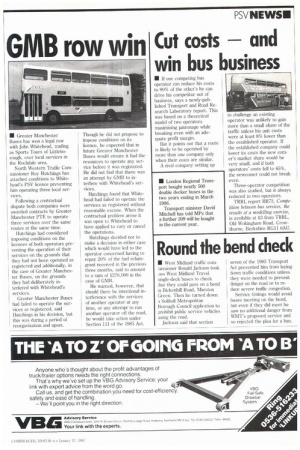• If one competing bus operator can reduce his costs
Page 21

If you've noticed an error in this article please click here to report it so we can fix it.
to 90% of the other's he can drive his competitor out of business, says a newly-published Transport and Road Research Laboratory report. This was based on a theoretical model of two operators maximising patronage while breaking even with an adequate profit margin.
But it points out that a route is likely to be operated by more than one company only when their costs are similar.
A rival company setting up to challenge an existing operator was unlikely to gain more than a small share of the traffic unless his unit costs were at least 8% lower than the established operator. If the established company could lower its costs the new comer's market share would be very small, and if both operators' costs fell to 65%, the newcomer could not break even.
Three-operator competition was also studied, but it always reduced to two operators.
TRRL report RR72, Competition between bus services, the results of a modelling exercise, is available at £3 from TRRL, Old Wokingham Road, Crowthorne, Berkshire RG11 6A11.












































































